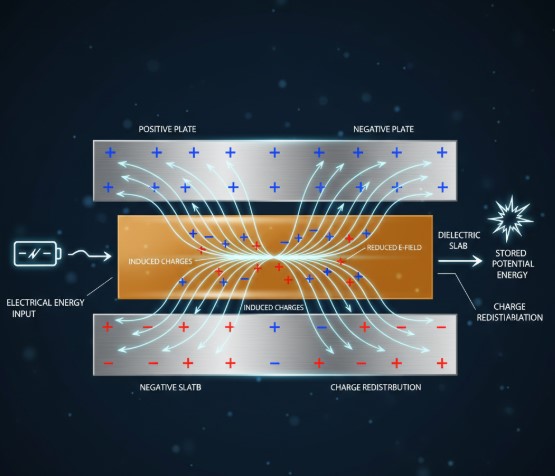Arc length continuous functions are a fascinating topic in mathematical analysis. We explore how many continuous functions can exist between two points, given a specific arc length. As the arc length increases, the number of possible functions changes, and we will examine how this growth occurs. This exploration involves concepts from both discrete and continuous mathematics, giving us a deeper understanding of function cardinality. The core question revolves around quantifying this growth and its implications.
Table of Contents
- Minimum Arc Length and Initial Function
- Discrete Analogue: Lattice Paths
- Asymptotic Growth and Dominant Terms
- Continuous Functions and Cardinality
- Final Solution: Cardinality of Functions
- Similar Problems and Quick Solutions
- Problem 1: Find the number of continuous functions with arc length ##s = \sqrt{5}##.
- Problem 2: Determine the minimum arc length for a function ##f : [0; 2] \to [0; 2]## connecting (0,0) and (2,2).
- Problem 3: Calculate the number of differentiable functions with arc length ##s = 3##.
- Problem 4: Find the number of piecewise linear functions with arc length ##s = \sqrt{3}##.
- Problem 5: What is the cardinality of continuous functions from [0, 1] to [0, 1] with arc length greater than 2?
More from me
Exploring the number of continuous functions ##f : [0; 1] \to [0; 1]## with a given arc length is an intriguing problem. We investigate how the count of these functions changes as the arc length, denoted by ##s##, increases from its minimum value. Understanding this requires delving into both discrete and continuous mathematical concepts.
Minimum Arc Length and Initial Function
The shortest arc length between the points (0,0) and (1,1) is achieved by the function ##f(x) = x##, resulting in an arc length of ##\sqrt{2}##. This represents the base case where only one function satisfies the condition. As the arc length ##s## increases beyond ##\sqrt{2}##, the question arises: how does the number of possible functions grow?
Intuitively, with a larger arc length, there’s more flexibility in constructing functions. This suggests that the number of functions should increase. However, quantifying this increase and understanding its nature—whether it remains at continuum cardinality or grows further—is the core of the problem. This initial exploration sets the stage for deeper analysis.
Discrete Analogue: Lattice Paths
To gain insight, consider a discrete analogue: finding paths from (0, 0) to (n, n) in the lattice ##\mathbb{Z}^2## using only diagonal steps. The length of a path is the number of steps. There is only one path of length ##n##. For a path of length ##n + 2##, there are ##{n+2 \choose 2} + n## possible paths, showing a significant increase. This discrete model provides an initial indication of how the number of paths grows with length.
Generalizing this, in a path of length ##n + 2k##, we choose ##2j## steps to be up-left or down-right, and ##n + 2k – 2j## steps to be up-right or down-left. The total number of such paths is given by the sum ###\sum_{j=0}^{k} {n+2k \choose 2j} {2j \choose j} {n+2k-2j \choose k-j}###. This formula quantifies the growth of paths in the discrete case, offering an analogy to the continuous function problem.
Asymptotic Growth and Dominant Terms
When ##n## is large compared to ##k##, the dominant term in the sum is ##{n+2k \choose 2k}##, which grows asymptotically like ##\frac{n^{2k}}{(2k)!}##. This demonstrates that the number of allowable paths indeed grows with the length of the path in the discrete analogue. The asymptotic behavior provides a clear indication of the growth rate, suggesting a polynomial increase with respect to ##n##.
This asymptotic analysis reinforces the intuition that longer paths allow for more variations, leading to a greater number of possible paths. The factorial term in the denominator moderates the growth, but the overall trend remains upward. The discrete case serves as a valuable model for understanding the continuous function problem, even though the exact mathematical forms differ.
Continuous Functions and Cardinality
Considering continuous functions from the unit interval to itself, there are ##2^{\aleph_0}## such functions. Given ##s > \sqrt{2}##, we define ##t = s – \sqrt{2}##. For any ##x \in (0,1)##, we can construct a function with the desired arc length by smoothly adjusting the value of ##f(x)## to extend the arc by ##t##. This construction provides a lower bound on the number of functions.
Even without requiring differentiability, one can imagine inserting a small triangle to increase the arc length by ##t##. This simple construction shows that there are at least ##|(0,1)| = 2^{\aleph_0}## functions satisfying the condition. Since this matches the total number of continuous functions, we conclude that there are exactly ##2^{\aleph_0}## functions with the given arc length. Thus, the cardinality remains the same once the minimal arc length is exceeded.
Final Solution: Cardinality of Functions
The number of continuous functions ##f : [0; 1] \to [0; 1]## with a given arc length ##s > \sqrt{2}## is ##2^{\aleph_0}##, which is the cardinality of the continuum. This result holds because we can always construct a continuum of such functions by slightly varying the path from (0,0) to (1,1) to achieve the desired arc length. The key insight is that the set of continuous functions is already so large that increasing the arc length does not change its cardinality.
Similar Problems and Quick Solutions
Problem 1: Find the number of continuous functions with arc length ##s = \sqrt{5}##.
Solution: ##2^{\aleph_0}##
Problem 2: Determine the minimum arc length for a function ##f : [0; 2] \to [0; 2]## connecting (0,0) and (2,2).
Solution: ##2\sqrt{2}##
Problem 3: Calculate the number of differentiable functions with arc length ##s = 3##.
Solution: ##2^{\aleph_0}##
Problem 4: Find the number of piecewise linear functions with arc length ##s = \sqrt{3}##.
Solution: ##2^{\aleph_0}##
Problem 5: What is the cardinality of continuous functions from [0, 1] to [0, 1] with arc length greater than 2?
Solution: ##2^{\aleph_0}##
| Concept | Description |
|---|---|
| Minimum Arc Length | The shortest distance between (0,0) and (1,1) is ##\sqrt{2}##, achieved by ##f(x) = x##. |
| Lattice Paths | A discrete analogue where paths are constructed on a lattice, showing a growth in the number of paths with increasing length. |
| Asymptotic Growth | The number of paths grows asymptotically like ##\frac{n^{2k}}{(2k)!}## in the discrete case. |
| Cardinality of Continuous Functions | There are ##2^{\aleph_0}## continuous functions from [0, 1] to [0, 1]. |
| Arc Length Continuous Functions | For any arc length ##s > \sqrt{2}##, the number of continuous functions is ##2^{\aleph_0}##. |
We also Published
RESOURCES
- Calculus II – Arc Length
- Arc length – Wikipedia
- Why is finding arc length so nasty? : r/learnmath
- 8.1: Arc Length – Mathematics LibreTexts
- Arc Length Formula With P0 as a Starting Point (Calc II) : r/calculus
- 13.3: Arc Length and Curvature – Mathematics LibreTexts
- Arc Lengths of Curves | Calculus I
- real analysis – Arc length of the Cantor function – Mathematics Stack …
- ArcLength—Wolfram Documentation
- calculus – Arc Length of an Ellipse using integration – Mathematics …








0 Comments